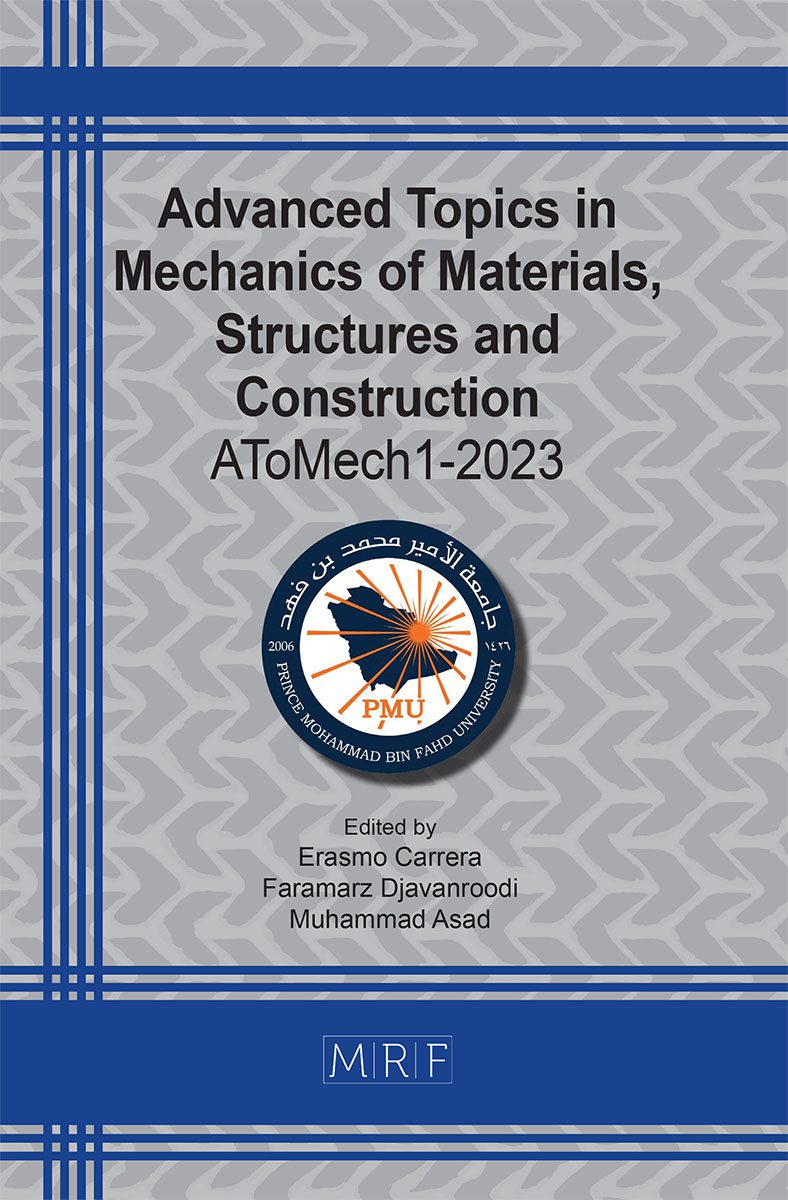Best theory diagram using genetic algorithms for composite plates
M.A. Hinostroza, J.L. Mantari
download PDFAbstract. Composite structures offer a practical approach for many engineering applications, but their design is complex and can result in excessive sizing due to limitations in current modeling techniques. BTDs minimize the number of unknown variables in a kinematic theory for desired accuracy or for a fixed error in the Carrera Unified Formulation. This paper presents a method for computing Best Theory Diagrams (BTDs) for laminated composite plates using Genetic Algorithms (GA). As reported in previous papers by the authors, a multi-objective optimization technique using a GA is applied to build BTDs for a given structural problem. The plate models stresses and displacements are compared to those of a reference solution, and a plate model performance is quantified in terms of the number of unknown variables, the mean error and standard deviation of the stresses and displacements. Also, with the objective of reducing the computational time, a Neural-Networks (NN) was trained to reproduce the mean error and standard deviation of the stresses and displacements for any plate model refined from a reference plate model is addressed. Numerical simulations were computed for laminated composite plates with previously uninvestigated boundary conditions and compare computational time for BTD calculation. The preliminary results show that the use of multi-objective GA plus NN method reduces considerably the computation time to build BTDs.
Keywords
Composite Plates, Genetic Algorithm, Best Theory Diagram, Carrera Unified Formulation (CUF), Machine Learning
Published online 8/10/2023, 11 pages
Copyright © 2023 by the author(s)
Published under license by Materials Research Forum LLC., Millersville PA, USA
Citation: M.A. Hinostroza, J.L. Mantari, Best theory diagram using genetic algorithms for composite plates, Materials Research Proceedings, Vol. 31, pp 135-145, 2023
DOI: https://doi.org/10.21741/9781644902592-15
The article was published as article 15 of the book Advanced Topics in Mechanics of Materials, Structures and Construction
![]() Content from this work may be used under the terms of the Creative Commons Attribution 3.0 license. Any further distribution of this work must maintain attribution to the author(s) and the title of the work, journal citation and DOI.
Content from this work may be used under the terms of the Creative Commons Attribution 3.0 license. Any further distribution of this work must maintain attribution to the author(s) and the title of the work, journal citation and DOI.
References
[1] Noor AK, Burton WS. Assessment of shear deformation theories for multilayered composite plates. Appl Mech Rev 1989;42:1-13. https://doi.org/10.1115/1.3152418
http[2] Carrera E, Brischetto S, Nali P. Plates and shells for smart structures classical and advanced theories for modeling and analysis. Wiley; 2011. https://doi.org/10.1002/9781119950004
http[3] Carrera E, Petrolo M. Guidelines and recommendation to construct theories for metallic and composite plates. AIAA J 2012;48(12):2852-66. https://doi.org/10.2514/1.J050316
http[4] Carrera E, Miglioretti F. Selection of appropriate multilayered plate theories by using a genetic like algorithm. Compos Struct 2012;94(3):1175-86. https://doi.org/10.1016/j.compstruct.2011.10.013
http[5] Koutsourelakis Phaedon-Stelios. Stochastic upscaling in solid mechanics: an exercise in machine learning. J Comput Phys 2007;226(1):301-25. https://doi.org/10.1016/j.jcp.2007.04.012
http[6] Yarasca J, Mantari JL. N-objective genetic algorithm to obtain accurate equivalent single layer models with layerwise capabilities for challenging sandwich plates. Aero Sci Technol 2017;70:170-88. https://doi.org/10.1016/j.ast.2017.07.035
http[7] Mantari, J. L., J. Yarasca, F. G. Canales, and R. A. Arciniega. “New methodology for the construction of best theory diagrams using neural networks and multi-objective genetic algorithm.” Composites Part B: Engineering 176 (2019): 107126. https://doi.org/10.1016/j.compositesb.2019.107126
http[8] Lothrop, K.W. (2003). Conceptual design optimization of a Cis-Lunar transportation architecture using genetic algorithms. Thesis.
http[9] M. Petrolo, A. Lamberti, and F. Miglioretti, “Best theory diagram for metallic and laminated composite plates,” Mech. Adv. Mater. Struct., vol. 23, no. 9, pp. 1114-1130, 2016. https://doi.org/10.1080/15376494.2015.1121525
http[10] Mantari, Jose Luis, Jorge Yarasca, Marco Petrolo, and Erasmo Carrera. “On the effects of trigonometric and exponential terms on the best theory diagrams for metallic, multilayered, and functionally graded plates.” Mechanics of Advanced Materials and Structures 27, no. 5 (2020): 426-440. https://doi.org/10.1080/15376494.2018.1478048
http[11] Hinostroza, M. A., and C. Guedes Soares. “Parametric estimation of the directional wave spectrum from ship motions.” International Journal of Maritime Engineering 158, no. A2 (2016). https://doi.org/10.5750/ijme.v158iA2.981
http[12] Carrera E, Brischetto S. A survey with numerical assessment of classical and refined theories for the analysis of sandwich plates. Appl Mech Rev 2009;62:1-17. https://doi.org/10.1115/1.3013824












